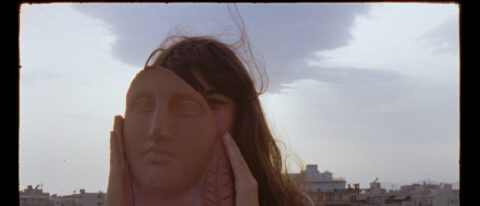Statues are static. They don’t move. But we do. Part of the contract of everyday urban life is that we are forced to keep looking at them; no matter whether we want to or not.
In Southern Europe — Rome, Plovdiv, Athens — monuments to antiquity are more pronounced than others. For Daphne Heretakis, the Parthenon, a dedication to Athena synonymous with Greece (and democracy itself), stains the skyline. But at the right depth of field, she can hold it in her fingers, observe it, prod it. Ask the deeper questions of these eternal monuments.
Only yesterday at a party, was I subjected to dispatches from a Roman holiday! Statues were the prevailing theme. Everywhere you turn in that city, the eternal city, you walk through the vestiges of a former (more powerful?) culture. The same can be said of Greece — which was once the birthplace of democracy, art, literature, philosophy, and now sadly evokes bankruptcy, revolution and unemployment. Yet, the statues remain; forbidding, beautiful, oddly melancholic…
With shades of Godard (playful Marxism), Rivette (surrealist satire) and Jude (going against national myths), Daphné Hérétakis’ What we ask of a statue is that it doesn’t move (2024) is a true cinematic pastitsio, blending documentary and essayistic forms with a roving, searching eye. Shot on overexposed film that gives it an antiquated, home-video feel, this alternately funny and thought-provoking work is one of the standout films from Cannes.
Hérétakis starts from points of absurdity to get to deeper truths. On the face of it, asking people on the street, “Would you be in favour of blowing up the Parthenon?” feels like the kind of provocation that should get her arrested. Dig a little deeper, however, and the fascinating question of whether the Parthenon is a symbol of Greece’s incredible legacy or the embodiment of stultification arises.
Because statues and monuments are never not political. From Edward Colston being chucked into Bristol Harbour to the re-emergence of Stalin statues in Georgia, statues are constantly being debated, destroyed, erected and de-erected in the eternal battle to win the narrative.
This film, inspired by the writings of Yorgis Makris and the Union of Aesthetic Saboteurs of Antiquities, suggests that the Parthenon not only blots out the sky but hides Greece’s present-day issues — chaotic politics, the rise of far-right parties, over-tourism. I believe Hérétakis is taking the subject seriously, but the aesthetic of her wonderful short, filled with the charm of everyday bustling Athenian life, somewhat belies the political aim, leading the viewer to reflect on their own relationship to immobile objects.
It had me think about how the German word for property is Immobilien. Literally: not mobile objects. With a rental crisis broadening across Europe, and felt acutely in Greece itself, leaders must ask themselves: should we spend millions and millions constantly honouring the past, or should we finally bother to build our youth a future? This film’s battle of non-moving objects is not just a reflection on the past; it speaks to the here and now, with alarming alacrity and accuracy.
Redmond is the editor-in-chief of Journey Into Cinema.
